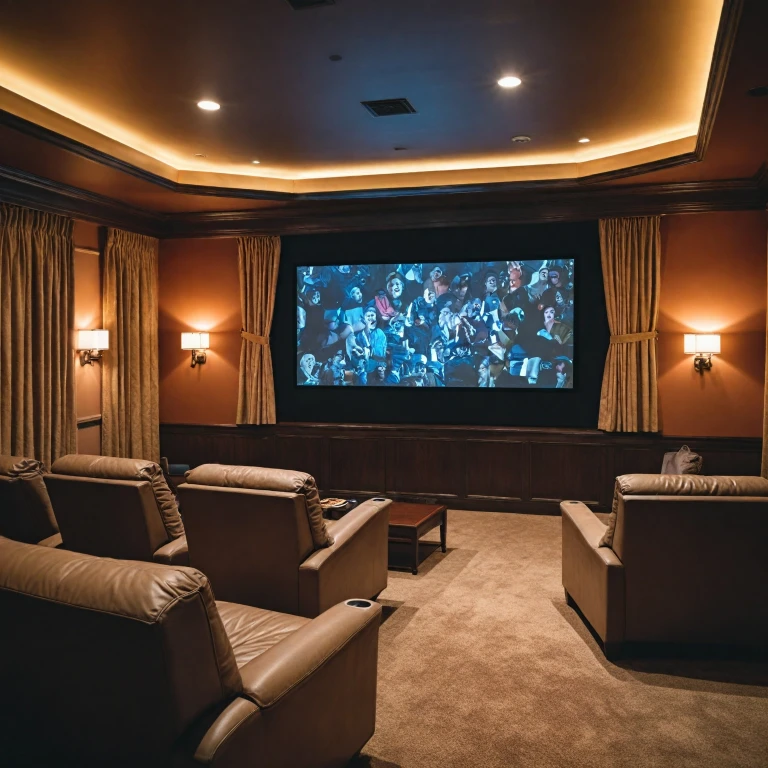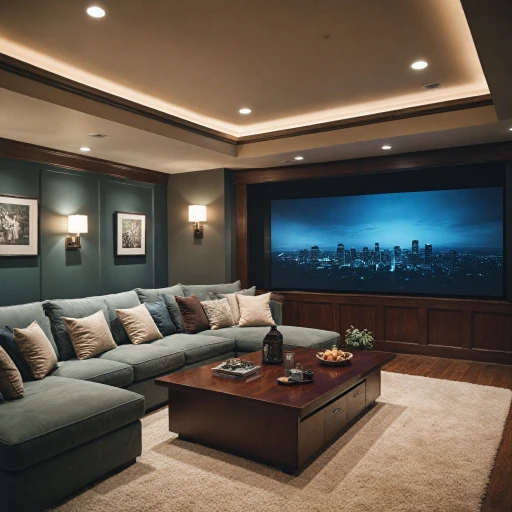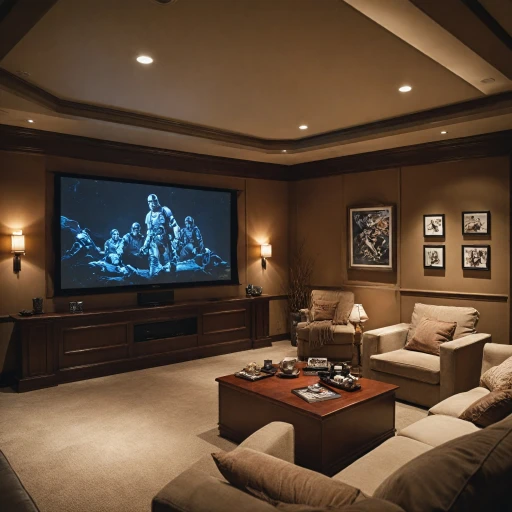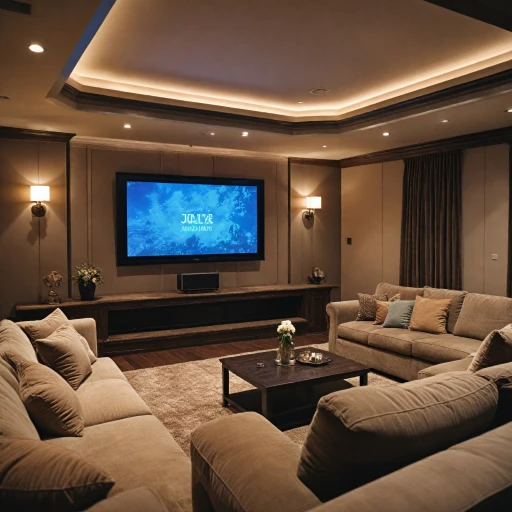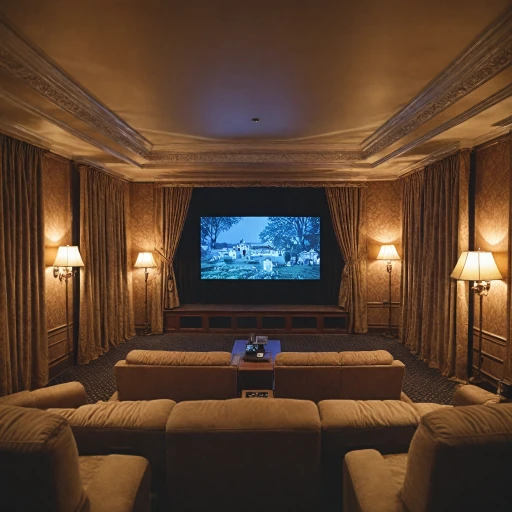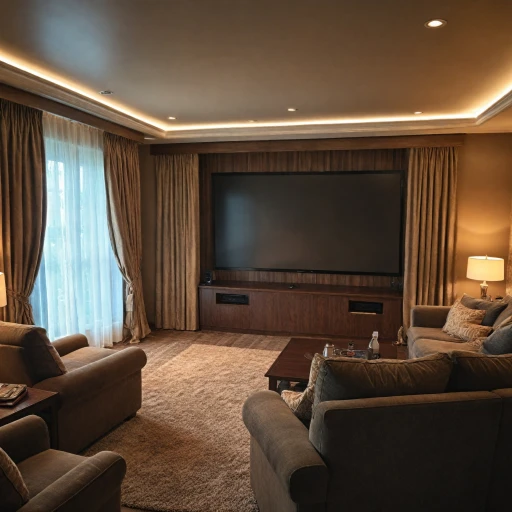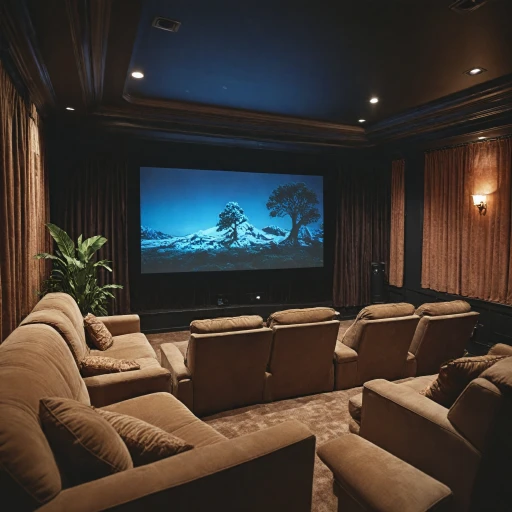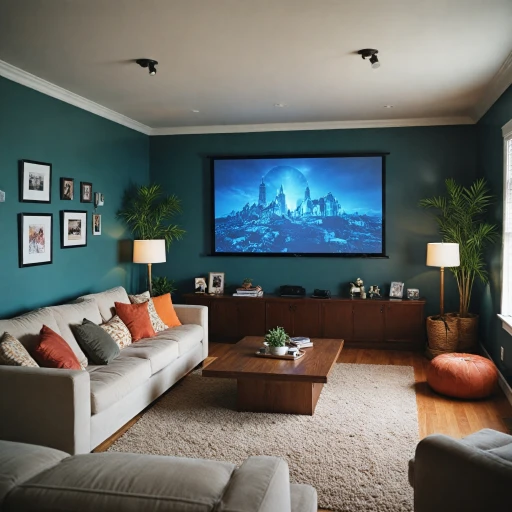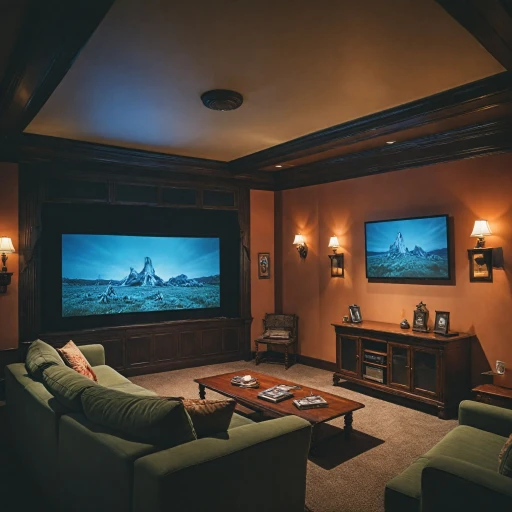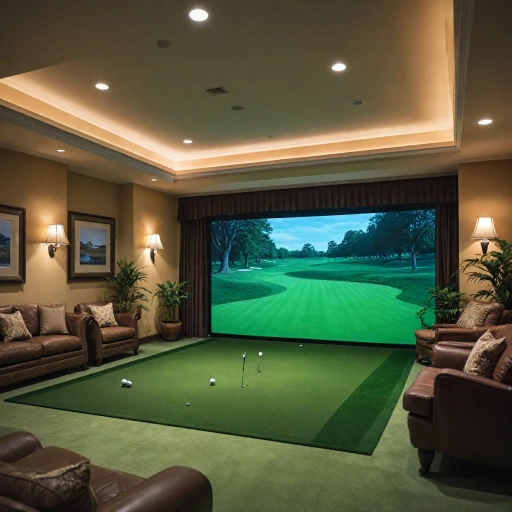Understanding the Importance of a Movie Screen Wall
The Foundation of Your Theater Experience
Creating the ultimate home theater involves more than just selecting the right projector or arranging plush seating. At its core, the movie screen wall significantly influences the overall viewing experience, making it a crucial component in your setup. The screen serves as one point of interaction between the film and the viewer, hence its importance cannot be understated.
In many ways, the screen is more than just a canvas for your favorite films. Its color, material, and gain all contribute to the clarity and vibrancy of the projections you enjoy. Whether you choose a premium Stewart or go for the more budget-friendly options available on Amazon, each screen brings unique attributes to the viewing table. For instance, a higher gain can intensify brightness, while a matt white finish can deliver more realistic colors—details that can heavily influence your enjoyment.
From Draper to Elite Screens, each brand offers various choices, suitable for different kinds of projectors—be it short throw or ultra short throw projectors. Understanding these distinctions helps in deciding whether a fixed frame or a manual screen is ideal for your space. With myriad options in sizes, from the standard 100-inch to larger 150-inch options, aligning with the correct screen size is essential to avoid overpowering or underwhelming the room.
While the screen selection is vital, it works in tandem with aspects like optimal projector placement and lighting considerations to create an immersive experience. Getting the right alignment ensures the image aligns perfectly with the frame, providing a cinematic feel. Likewise, controlling ambient light or investing in screen innovations that handle light more effectively can dramatically enhance the projection quality.
For those truly committed to crafting a near-cinematic environment at home, exploring ways to further enhance your home theater experience can be an interesting endeavor. Think about adding a riser platform to enhance seating arrangements, ensuring every viewer the best sightlines and sound coverage.
Choosing the Right Screen Material
Picking the Correct Material for the Job
When setting up your home theater, the type of screen material you choose plays a significant role in the quality of your viewing experience. The right balance of gain, durability, and budget make all the difference. For most setups, an elite matt white screen suffices, offering a neutral tone that displays colors accurately. However, alternatives like "grey" or high-gain screens might better serve certain environments—such as brightly lit rooms—by improving contrast and brightness. Brands like Draper and Stewart offer premium options favored by home theater enthusiasts, although they often come with a higher price tag. You might also consider screen innovations that are specifically designed to work with short throw and ultra-short throw projectors. These screens help maximize the image quality in tighter spaces. For the more budget-conscious, manual wall or ceiling-mounted screens are available on platforms like Amazon, with varied price points and materials that cater to different tastes and projector types. There is also the option of projection screens that come already fixed or sable frame variants, both of which provide sleek and seamless integration into your theater setting. Alternatively, screen paint can be a cost-effective choice, allowing you to convert any wall into a projector screen with a few coats. However, the texture of the wall and ambient light conditions can affect the result. Ultimately, the choice will depend largely on your room setting, available projectors, and how you plan to use the screen, such as whether you need flexibility in size or if a fixed frame might work for you. By evaluating your specific needs and doing comprehensive research, you can find the ideal screen on sale that elevates your home theater to elite status. For more detailed guidance on projector selections specific to unique settings, you may explore this helpful resource.Optimal Screen Size and Aspect Ratio
Deciding on the Perfect Projection Screen Dimensions
Achieving the ideal screen size is pivotal in crafting an immersive cinematic experience in your home theater. It not only heightens the visual appeal but also complements the projector's capabilities and the space dimensions. When considering screen dimensions, it's crucial to account for the seating distance from the screen. A general rule is to have the screen width approximately 1/3 of the viewing distance to ensure that viewers aren't straining their eyes. For example, a room allowing a 10-foot viewing distance would ideally serve with a 120-inch projector screen. This size balances immersion while avoiding any discomfort from a too-large screen.Aspect Ratio: The Viewing Experience Transformer
While selecting a projector screen, the aspect ratio plays a crucial role. The most common ratios to consider are 16:9 and 2.35:1. A 16:9 ratio is versatile for most current content, from Netflix series to sports events. However, for a true cinematic feel, especially if you're an avid film enthusiast, consider the wider 2.35:1 aspect ratio. This ratio reflects the ultra-wide screen format often used in theaters and can transform your viewing experience when watching epic films. Elite screens, known for their premium quality and affordability, offer diverse fixed frame screen options in different sizes and aspect ratios, making them suitable for various budgets and space constraints. Items such as the Sable Frame Series can be found on e-commerce platforms like Amazon, providing a convenient choice for many. If wall space is an issue or flexibility is preferred, a wall ceiling mounted screen provides versatility. Manual or electric deployment options cater to different needs, and choices between matt white or special screen paint finishes can optimize projection quality based on room lighting conditions. With considerations to the projector type, such as short throw or ultra-short throw projectors, projector placement influences screen size. These projectors require less distance to achieve large images, which can afford a larger screen without needing extensive room space. Careful deliberation over these factors as part of your home theater setup will ensure your screen serves as a stunning visual anchor in your entertainment space, whether you're looking at a draper screen on sale or evaluating a high-gain stewart screen.Projector Placement and Alignment
Placing the Projector for Optimal Viewing
Placing your projector correctly is crucial for achieving the best viewing experience in your home theater. Not all projectors and screens are created equally; thus, understanding your projector's throw distance is a fundamental step. First, consider the type of projector you have. Short throw and ultra short throw projectors require less distance from the screen and are suitable for smaller rooms. If your room is longer, standard throw projectors might be a better fit. You can determine the optimal position by referring to the specifications of your projector, often detailed in the item's manual. The screen's gain is another factor to consider; it determines how well projected light is reflected. Projector screens like those from Draper, Stewart, or Elite Screens come with different gain levels. A higher gain screen reflects more light, which is ideal for rooms with ambient light, while a matt white screen is suitable for a darker setup. Remember to adjust the projector's alignment meticulously. Ensuring that the projector is perpendicular to the screen will prevent image distortion. A fixed frame or sable frame screen can assist in maintaining a sharp, non-warped image. Lastly, think about the mount setup. Whether using a wall ceiling mount or a traditional table setup, ensure it aligns accurately with the screen to avoid frequent adjustments. If you're making a new purchase, consider browsing projector and screen options on platforms like Amazon, where you can compare items by price, size, and features to find the best sale deals.Lighting Considerations for a Movie Screen Wall
Crafting the Best Lighting Environment
Creating the right lighting conditions for a movie screen wall is crucial to achieving the optimal home theater experience. Excessive ambient light is often a concern as it can wash out the image projected on screens. Consider the following tips to manage light:- Blackout Curtains: Investing in blackout curtains can help mitigate external light, enhancing picture clarity on your white projector or an elite fixed frame screen.
- Lighting Control: Install dimmable lights to control indoor lighting effectively, or use smart bulbs to adjust the light levels at your leisure.
- Wall Color: Consider painting the walls a dark color if possible, as matt white walls can reflect light back onto the screen, reducing contrast.
- Projector Selection: Choose a projector with a higher lumen count for brighter rooms. Ultra short throw projectors work best close to screens, reducing light interference.
- Screen Technology: Make use of high gain screens; they reflect light better, improving image quality. Brands like Stewart or Draper offer high-performance options. Check amazon for good sale prices.
Acoustic Treatments for Enhanced Sound
Enhancing Audio with Acoustic Panels
When tailoring your perfect movie screen wall, incorporating the right acoustic treatments is crucial for an immersive theater experience. The dynamics of sound play a significant role in your home theater's overall effect, as they add depth to the visuals delivered by your elite projector screens or wall-mounted projection systems.
One of the simplest yet effective ways to enhance sound quality is by using acoustic panels. These are essential in managing the acoustics of your space, ensuring that sound waves do not bounce off bare walls, leading to echoes or reverberations. Panels with dense, sound-absorbing materials like foam or fabric help in reducing unwanted noise. They are often available on platforms like Amazon, covering multiple options in your price range.
Consider mounting these panels strategically on the walls adjacent to your projector screen or screen frame. Whether using a fixed frame projection screen or a DIY screen paint solution on your wall, positioning acoustic treatments to flank the screen can optimize audio quality, regardless of the volume.
Choosing the Right Acoustic Material
Most theater enthusiasts advocate for heavy drapery or fabric-covered panels, which can add both aesthetic value and sound quality. While white or matt white projector screens might be your focus for visuals, the acoustic materials can contrast creatively without being a distraction.
If you have invested in high-end draperies, like those from Stewart or Draper, use them strategically with the projection setup. Such materials, used alongside standard acoustic panels, can enhance sound dampening while elevating the decor.
Maintaining the Balance between Acoustics and Aesthetics
Ensure the acoustic elements complement the visual setup, akin to choosing the right screen size and aspect ratio for your space. They should seamlessly blend around your elite screens or along the theater room's ceiling and walls, without intruding on the viewer's experience. Check the item's dimensions while purchasing to make sure acoustic panels fit within your existing setup without overpowering it.
Start by experimenting with various placements and materials, and remember that every space will react differently, depending on wall materials and room shape. Short throws and ultra-short throw projectors could notably benefit from this meticulous attention, ensuring a theater-like surround sound experience right in your living room.
